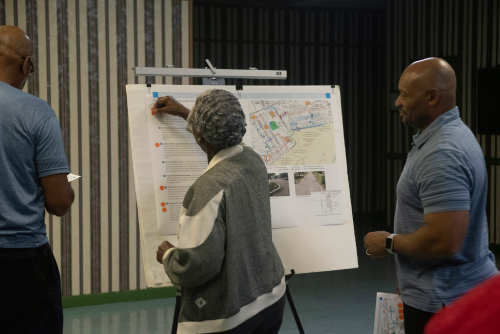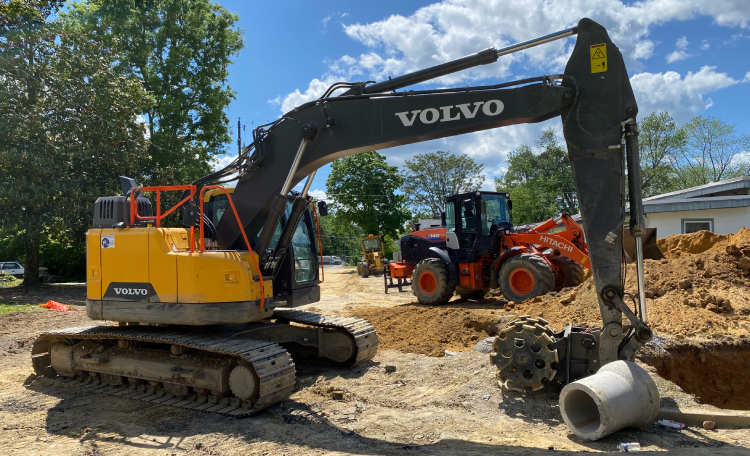Petersburg's Lakemont Community

Culpeper Avenue Storm Sewer Extension – COMPLETE
The Culpeper Avenue Storm Sewer Extension project, which reduces flooding in the vicinity of Brunswick Street and Slagle Avenue, was successfully implemented in 2021. The project adds capacity to the storm sewer system and includes 225’ of new storm sewer pipe and Petersburg’s first hydrodynamic separator, a structure in the ground that improves local water quality by separating pollutants from stormwater.

N. Whitehill Drive Drainage Improvements – CONSTRUCTION
The N. Whitehill Drive Drainage Improvements project seeks to reduce flooding caused by an undersized and dilapidated sewer system in the vicinity of N. Whitehill Drive and Nash Street. The project was designed by Timmons Group and includes the installation of new storm sewer pipes and grassy swales to better manage stormwater. New storm sewer will be installed under N. Whitehill Drive and Nash Street and two grassy swales will be installed along Nash Street between N. Whitehill Drive and S. Whitehill Drive in 2024.
Henrico Street Drainage Improvements – STUDY UNDERWAY
The James River Association was awarded a planning and technical assistance grant from the National Fish and Wildlife Foundation’s Chesapeake Bay Small Watershed Grant Program to support this drainage improvement project. Timmons Group is studying Henrico Street to identify engineered solutions to flooding experienced by residents in the vicinity of S. Whitehill Drive, Henrico Street, and Appleton Street. Final enegineering design is anticipated in 2024.
Questions?
If you have any questions about these projects or would like to report flooding in the neighborhood, please contact Justin Doyle, the James River Association’s Director of Community Conservation, by calling (804) 543-5479 or emailing jdoyle@thejamesriver.org.
- When rain falls on impervious surfaces such as roads and sidewalks, it becomes stormwater runoff
- If stormwater runoff carries pollutants such as dirt, nutrients from lawn fertilizer, bacteria from pet waste, or toxics like oil from cars as it flows across an impervious surface to a river or stream, it becomes stormwater pollution
- Stormwater runoff contributes to localized flooding in the Lakemont and Whitehill neighborhoods as a result of inadequate storm sewer infrastructure
Green infrastructure is a solution to stormwater pollution and localized flooding.
- Green infrastructure includes trees, rain gardens, and grassy swales that enhance our built environment for the benefit of humans and the ecosystem of which we are a part
- Green infrastructure contributes to healthier communities by intercepting and filtering stormwater runoff before it enters our rivers and streams, improving air quality, and reducing the urban heat island effect
Go Green at Home!
River Hero Homes is a community of stewards that realize the first step to a healthier James River starts at home. Implementing river-friendly conservation practices at home is as easy as properly disposing of pet waste, using regional native plants in gardens and landscapes, reducing the use of fertilizers, herbicides, and pesticides, and conserving water.
Many Thanks to our Partners

This project has been funded wholly or in part by the United States Environmental Protection Agency under assistance agreement CB 96387301. The contents of this document do not necessarily reflect the views and policies of the Environmental Protection Agency, nor does the EPA endorse trade names or recommend the use of commercial products mentioned in this document.
